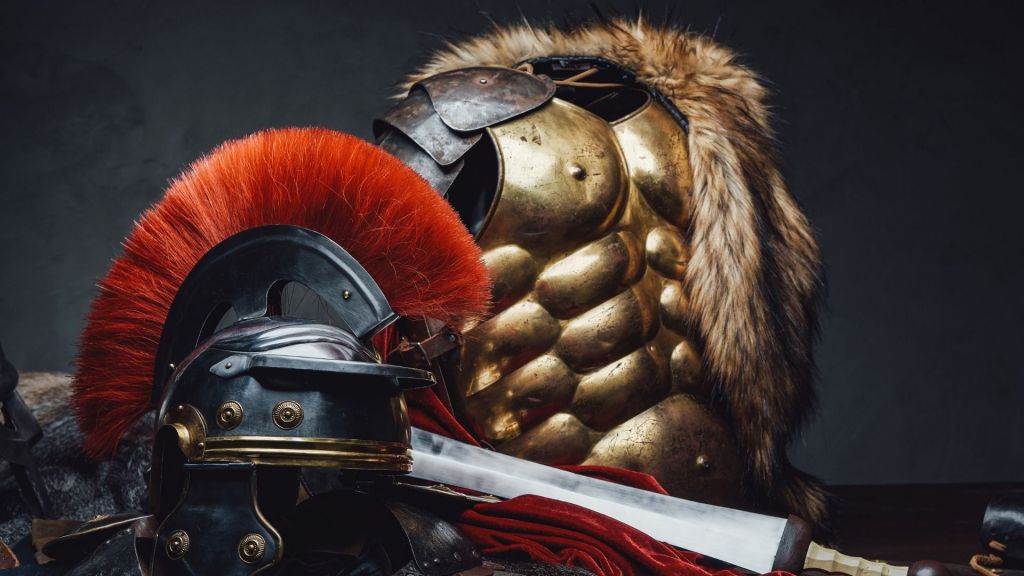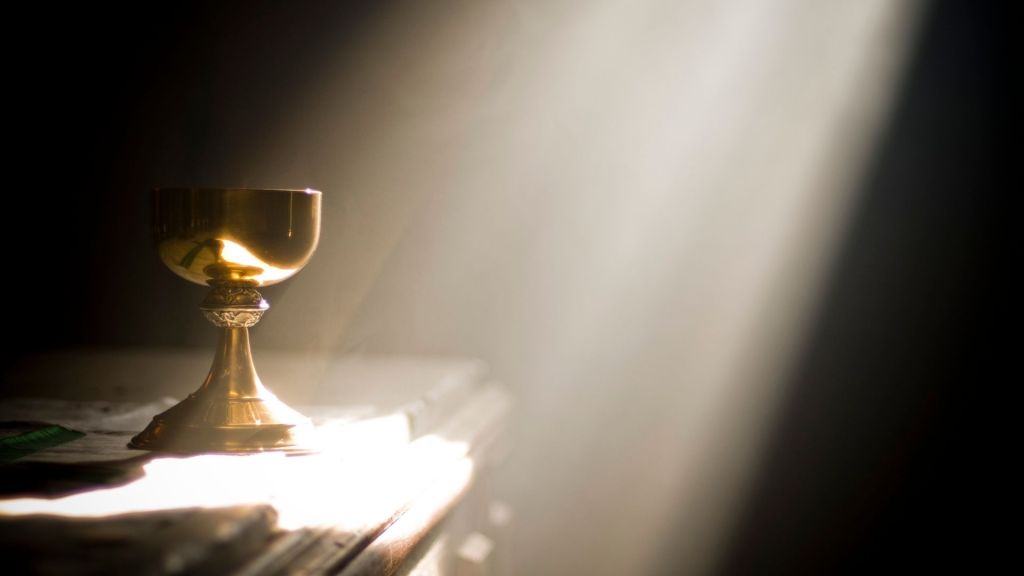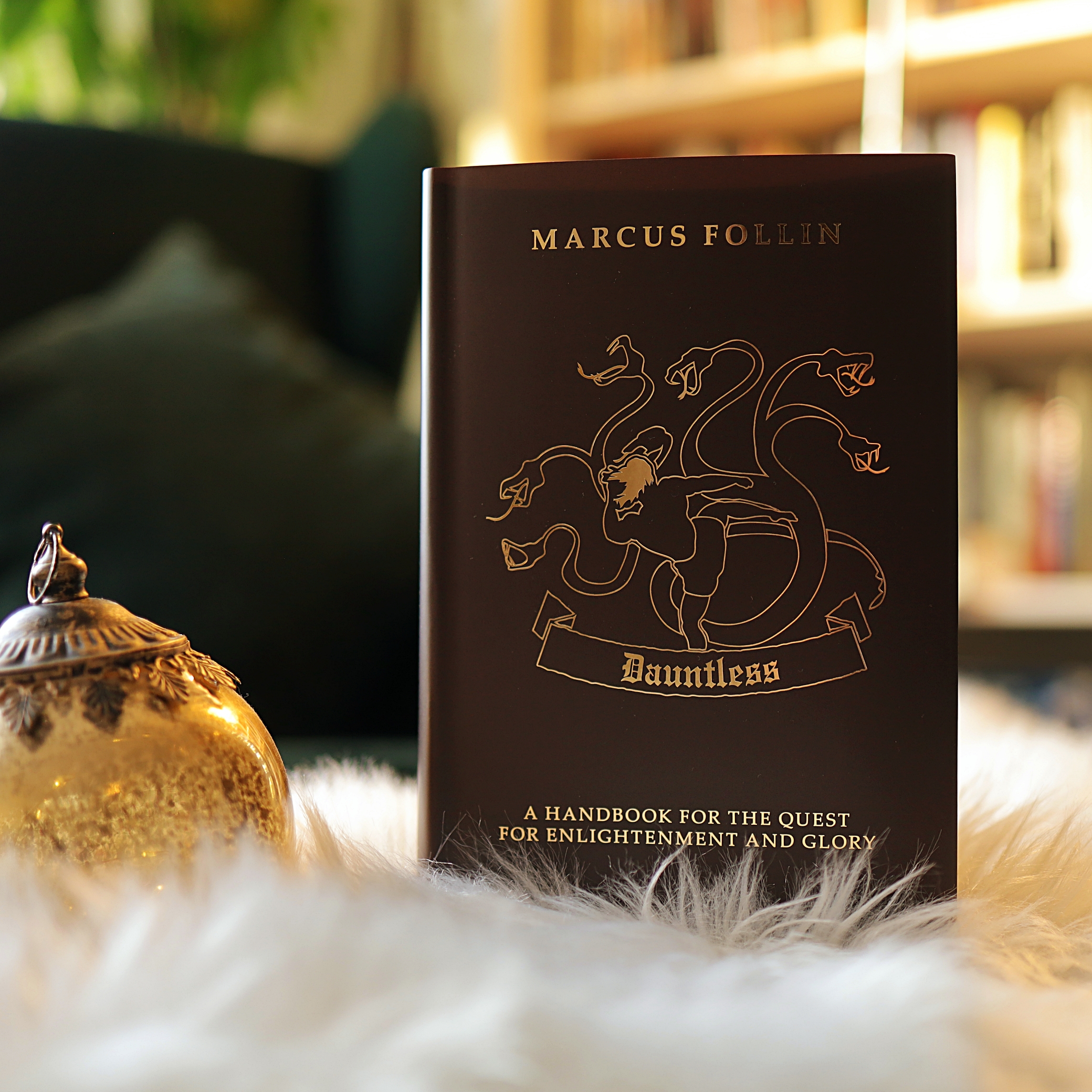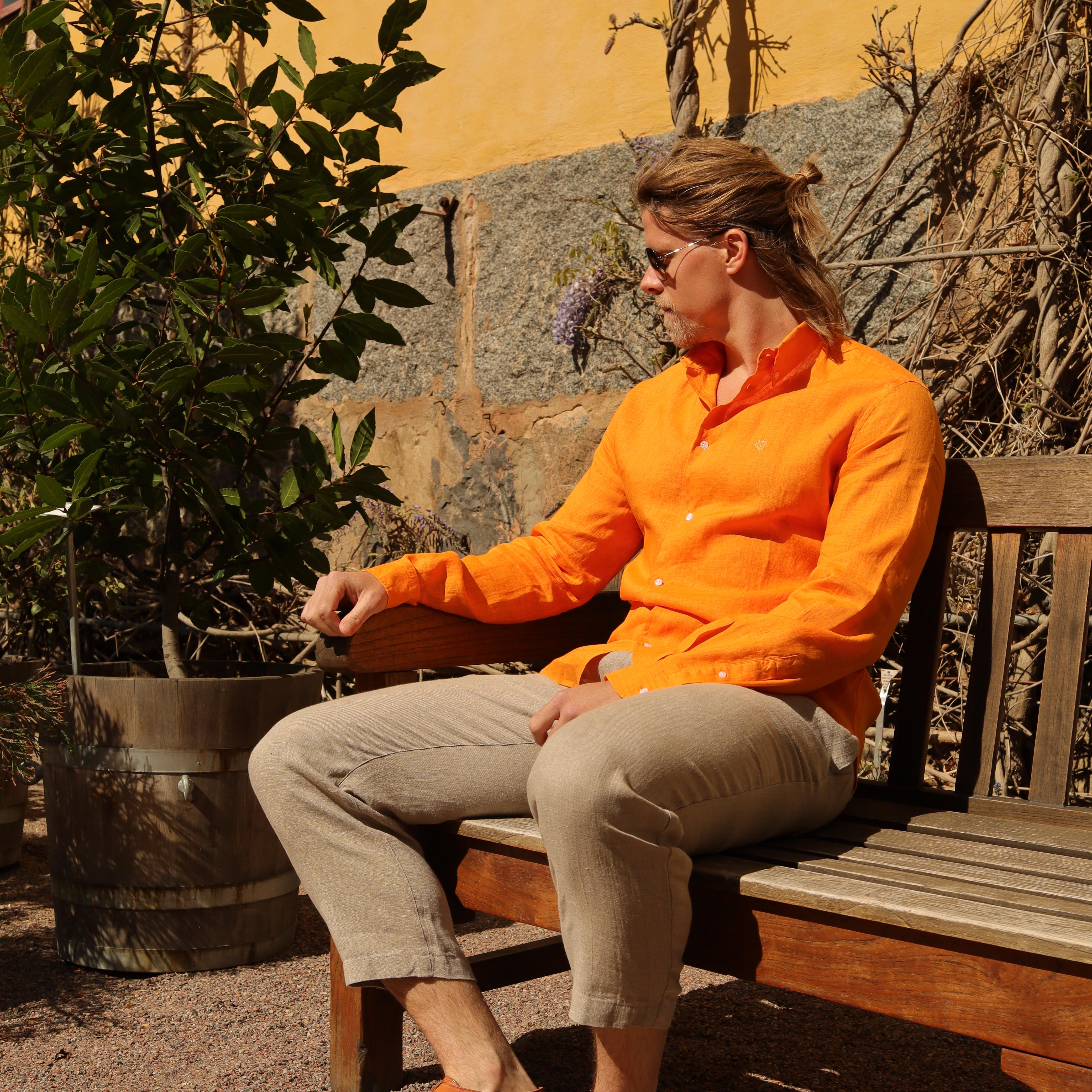The Mystery of the Grail by Julius Evola

I have read The Mystery of the Grail by Julius Evola. This book was at first just an appendix to Revolt Against the Modern World, but three years after its release Evola published The Mystery of the Grail as a book of its own – which is fortunate for us. On a personal note, I have always had a great affinity for the Grail legend, so perhaps I am biased in this regard, but I would say that this is one of Evola’s most interesting books. Something to be noted is that many of the perspectives presented in the book are elaborated on in other books as well, so being familiar with Evola beforehand may make the insights easier to understand.
Generally speaking, the more of Evola you read, the more sense his other works will make. As I mentioned in this video (Momentum Is King – Bombard Your Mind To Learn – Train Everyday), the more pieces of a puzzle you put down, the better grasp of the full picture you will get. Below are, as always, just a few insights I thought would be particularly interesting to share.
Guelphs and Ghibellines
A reoccurring theme in Evola’s work is the medieval conflict between the Guelphs (supporters of the Pope) and the Ghibellines (supporters of the Holy Roman Emperor). Understanding this conflict and Evola’s views on it is instrumental in understanding many of his other teachings. This is especially true for his disagreement with René Guénon, which we have discussed in many other reviews.
Evola, as we have noted before, viewed the Emperor – whether in the Roman Empire or the Holy Roman Empire – as the (rightful) highest spiritual authority, as opposed to the Pope. Therefore, Evola viewed the Middle Ages from a pro-Ghibelline perspective. Much more can be said about the historical context surrounding the Guelphs and Ghibellines, and we are bound to return to the topic at a later stage.

The Three Elements of Medieval Civilisation
In a very insightful chapter titled The Grail as a Ghibelline Mystery, Evola notes that medieval civilisation was shaped by three elements: Northern-Pagan, Christian, Roman. A certain segment in this chapter is so interesting that I found it reasonable to share most of it here. He states that the Northern-Pagan component played a decisive role in many aspects of social life, and perhaps more importantly for the topic at hand, that:
‘The feudal regime, the knightly morals, the civilisation of the courts, the original substance that engendered the crusading spirit are inconceivable without a reference to Nordic-Pagan blood and spirit.’
Julius Evola – The Mystery of the Grail. Page 121.
And, in regard to the Goths and other Germanic tribes (i.e. Nordic-Pagan blood), he states that:
‘But while the races that descended upon Rome from the North should not be considered “barbarian” from this perspective (since it seems to me that they carried along values that were superior to those of a civilisation that was already decayed in its principles and in its people), we can still talk of a certain barbarism, which does not mean primitivity but rather involution, in specific regard to their spiritual traditions. I have already mentioned the existence of a primordial Nordic-Hyperborean tradition. In the peoples living at the time of the invasions we can find only fragmentary echoes and obscure memories of such a tradition, which leave a wide margin to popular legends and to superstition.’
Julius Evola – The Mystery of the Grail. Page 121.
This is similar to what I have said in regard to the Goths as being the true heirs of the Roman spirit. As I noted in a recent article: The Rome that Alaric sacked in 410 was a far cry from the glorious city it had once been, and the spirit that led the Romans to glory had been long gone by this stage. I will meditate further upon this, but even at this stage one could argue that the spirit of Rome – which was founded by invading Indo-Europeans from the north – would have had more in common with the Goths than the people of the Roman empire during its waning years. I will return to this topic at a later stage, but what we can say now is that Rome during the early 400s was not the same Rome (bio-spiritually) as it was during its Golden Age (for more information on ancient Roman DNA, read this article: Ancient Roman DNA).

‘In any event, these memories were such that forms of a tough, warlike, and rough-hewn life prevailed over everything spiritual. The Nordic-Germanic traditions of the time, which were largely constituted by the Eddas, retained slight residues whose vital possibilities appear to have been exhausted and in which little was left of the wide scope and metaphysical tension that were proper to the great cycles of the primordial tradition. Thus we may speak of a state of involutive latency of the Nordic tradition. But as soon as contact with Christianity and with the symbol of Rome occurred, a different condition ensued; this contact had a galvanising effect. In spite of everything, Christianity revived the generic sense of a supernatural transcendence. The Roman symbol offered the idea of a universal regnum, of an aeternitas carried by an imperial power.’
Julius Evola – The Mystery of the Grail. Page 121.
Thus, one interpretation could be that the spirit of Eternal Rome – Imperial Europa – was inherited by the Goths (and other Germanic tribes – the Franks in France for example) upon their invasion of Western Roman territories. This spirit would then give raise to the Middle Ages (which was a spiritual high-point for Evola, as he discusses elsewhere). One could envision the passing of a flame in terms of this spirit – the Imperial spirit going from Rome to the Holy Roman Empire, with Charlemagne being a particularly bright flame in this regard.
‘All this integrated the Nordic substance and provided superior reference points to its warrior ethos, so much as to gradually usher in one of those cycles of restoration that I have labelled “heroic” in a special sense. And so, from the type of the mere warrior the figure of the knight arose; the ancient Germanic traditions of war waged in function of Valhalla developed into the supranational epic of the “holy war” or crusade’.
Julius Evola – The Mystery of the Grail. Page 121.
In inheriting this spirit, the Germanic peoples could elevate themselves – i.e. the lower warrior could transcend into the higher knight. Evola discusses the concept of holy war further in Metaphysics of War. I also elaborate on the ‘inner’ and ‘outer’ crusade and jihad in Dauntless. There is an important lesson to be learned here – namely, that a high-thumos man guided by higher principles can elevate himself above his current state. Therefore, it can be said that adding a spiritual dimension to one’s life is a good decision.

‘A shift occurred from the type of the prince of a particular race to the type of the sacred and ecumenical emperor, who claimed that the principle of his power had a character and an origin no less supernatural and transcendent than that of the Church. This true renaissance, however, this grandiose development and wonderful transformation of forces, required an ultimate reference point, a supreme centre of crystallisation higher than the Christian though Romanised ideal, and higher than the external and merely political idea of the Empire. This supreme point of integration was manifested precisely in the myth of the Grail’s regality, according to the intimate relation it had with the several variations of the “imperial saga.” The silent problem of the Ghibelline Middle Ages was expressed in the fundamental theme of that cycle of legends: the need for a hero of the two swords, who overcomes natural and supernatural tests, to really ask the question: the question that avenges and heals, the question that restores power to its regality.’
Julius Evola – The Mystery of the Grail. Page 121.
The question he refers to is a common theme in the Grail legend (i.e. that the hero must ask an appropriate question at a certain stage). The quote continues:
‘The Middle Ages awaited the hero of the Grail, so that the head of the Holy Roman Empire could become an image or a manifestation of the Universal Ruler; so that all the forces could receive a new power; so that the Dry Tree could blossom again; so that an absolute driving force could arise to overcome any usurpation, antagonism, laceration; so that a real solar order could be formed; so that the invisible emperor could also be the manifest one.’
Julius Evola – The Mystery of the Grail. Page 122.
In conclusion it can be said that (as we have noted before) Evola viewed the Emperor (in this case the Holy Roman Emperor) as the rightful spiritual authority, just as the Pontifex in Rome had been, as opposed to the Papacy. It is worth pointing out that the rivalry between Emperor and Pope during the Middle Ages was not only in regard to spiritual authority, but also in terms of political power. As noted above, this is a deep and interesting topic which we will return to in other contexts.
Ancient Wisdom in Constantinople
Just as the imperial spirit went from Rome to its Germanic inheritors, so did another spirit of the classical world go to Constantinople. This spirit, in the form of classical knowledge and art, returned to Renaissance Italy during the final years of the Byzantine Empire (to save the treasures from the Ottoman conquest). This is not something Evola elaborates on in the book – it is merely a note of my own for the sake of clarity. We will return to this discussion at a later stage.

The Templars and the Crusade Against the Grail
Evola refers to Otto Rahn, whom we have discussed in these reviews: Lucifer’s Court – Book Review and Inspiring Quotes and Crusade Against the Grail by Otto Rahn as well as in Podcast Episode 9. The Pinnacle of Civilisation – France. In his discussion about the Cathars he notes that, in his view, the spirit of Catharism had little to do with the spirit of the Grail’s Templarism. From my understanding of Cathar doctrine, I am inclined to agree with this assessment. If one were to view the Templars, and other similar organisations such as the Teutonic Order and the Hospitallers, as spiritual descendants of the Indo-European Männerbund, then they are indeed quite different from the less militaristic Cathars. The life-denying attitudes of the Cathars are in sharp contrast to the heroic (in the Evolian sense) spirit of the Templars. The quote below ties in well with previous discussions regarding the Magna Mater (for example here: The Yoga of Power by Julius Evola).
‘But while in the Grail cycle the positive and virile aspect of an ancient, pre-Christian Nordic-Celtic legacy was resurrected, in Catharism what apparently reemerged was the negative, feminine, gynecocratic aspect, belonging to a different pre-Christian legacy, which I have characterised elsewhere as “Atlantic-Southern” and which should be considered as an alteration of the primordial tradition in the sense of the “cycle of the Mother.”’
Julius Evola – The Mystery of the Grail. Page 139.
He goes on to note that the Cathars viewed the Catholic Church as ‘too Roman’ to be the Cathar ‘Church of Love’. To use modern political terms, one could say that the Cathars were ‘to the left’ of the Catholic Church. This is quite similar to how the discourse regarding Christianity looks today – plenty of criticism comes from ‘the left’ (in the form of atheists and anti-Europeans, etc.) as well as from ‘the right’ (i.e. Pagans).
In pointing this out Evola shows that the crusade against the Cathars and the attacks on the Templars (in the fateful year of 1307) were quite different in their nature.
I thought to add something that relates to this. On a personal note, I usually defend the Church and Christianity when attacks come from the ‘Left’ (i.e. from liberals and atheists etc.), but am receptive to criticism from the ‘Right’ (i.e. from Right-Wing Pagans) if voiced in a respectful and mature manner.

Philip the Fair and the Templars
In Metaphysics of Power (I wrote a shorter review of it), Evola elaborates on France’s Philip the Fair. Evola mentions Philip in this book as well. He does not have much good to say about him – he labels him a ‘secularised, profane, and despotic king who hated the aristocracy.’ I am not yet knowledgeable enough about medieval French history to comment upon whether Philip the Fair was a good king or not. His elimination of the Templars and opposition to the aristocracy can simply be seen as a way to solidify state power – which is natural and understandable.
Thunderweapons and the Axis Mundi
The concept of the World Axis – Axis Mundi – will be familiar for those who read my review of The Serpent Symbol in Tradition by Dr. Charles William Dailey. Evola mentions it in chapter 18, which is titled The Mystery of the Lance and of Revenge, in which he notes that the lance (like the scepter) often interferes with the symbolism of the Axis Mundi. He does not elaborate extensively upon the concept, but I thought it would be interesting to point it out since we encountered thunderweapons and the Axis Mundi in the aforementioned book.

René Guénon and the Freemasons
In the epilogue, Evola expresses his lament over the fact that Guénon views Freemasonry in a positive light. Although the discussion on Freemasonry is brief and not central to the book, I deemed it reasonable to share this here since we are bound to return to the topic in later reviews or Podcast episodes.
‘It is surprising to find in a very qualified expert in traditional studies, such as Guénon, the claim that together with Compagnionaggio, Freemasonry is almost the only organization in the West that currently may claim, despite its degeneration, “an authentic traditional origins and a regular initiatory transmission” (Apercus sur l’initiation [Paris, 1946], 40, 103.) Guénon apparently rejects the correct diagnosis of Freemasonry as a pseudoinitiatory syncretism promoted by underground forces of counterinitiation, a diagnosis that could be established even on the basis of his own views. How Guénon’s view of Freemasonry as a traditional organization could possibly be reconciled with his positive assessment of Catholicism, a sworn enemy of modern Freemasonry, still needs to be clarified.’
Julius Evola – The Mystery of the Grail. Page 172.
Evola goes on to say that he has friends who are Freemasons, including Reghini – whose articles are included in Introduction to Magic (reviews here and here). He also mentions that he has some good things to say about the lodges that refrain from socio-political engagement.
Conclusion
As noted above, this is perhaps the most interesting book by Evola I have read thus far. The book is also helpful when it comes to understanding his view of the imperial spirit, and this, in turn, makes many of his other teachings more understandable. If you are interested in Evola’s writings, I can highly recommend the book.














You must be logged in to post a comment.